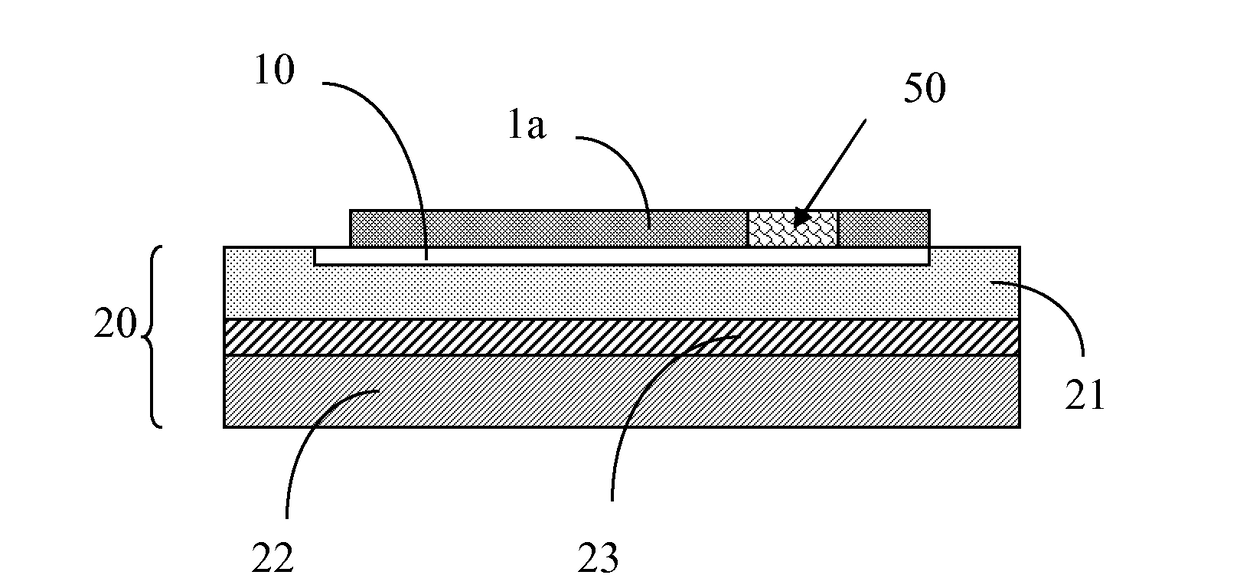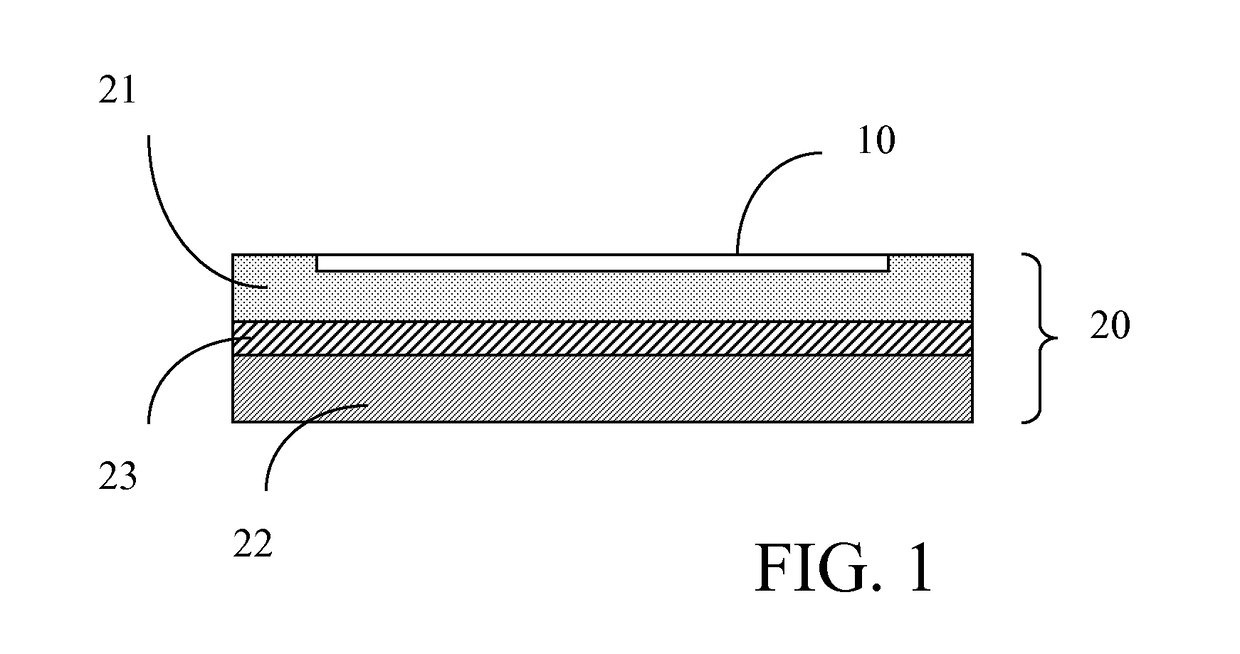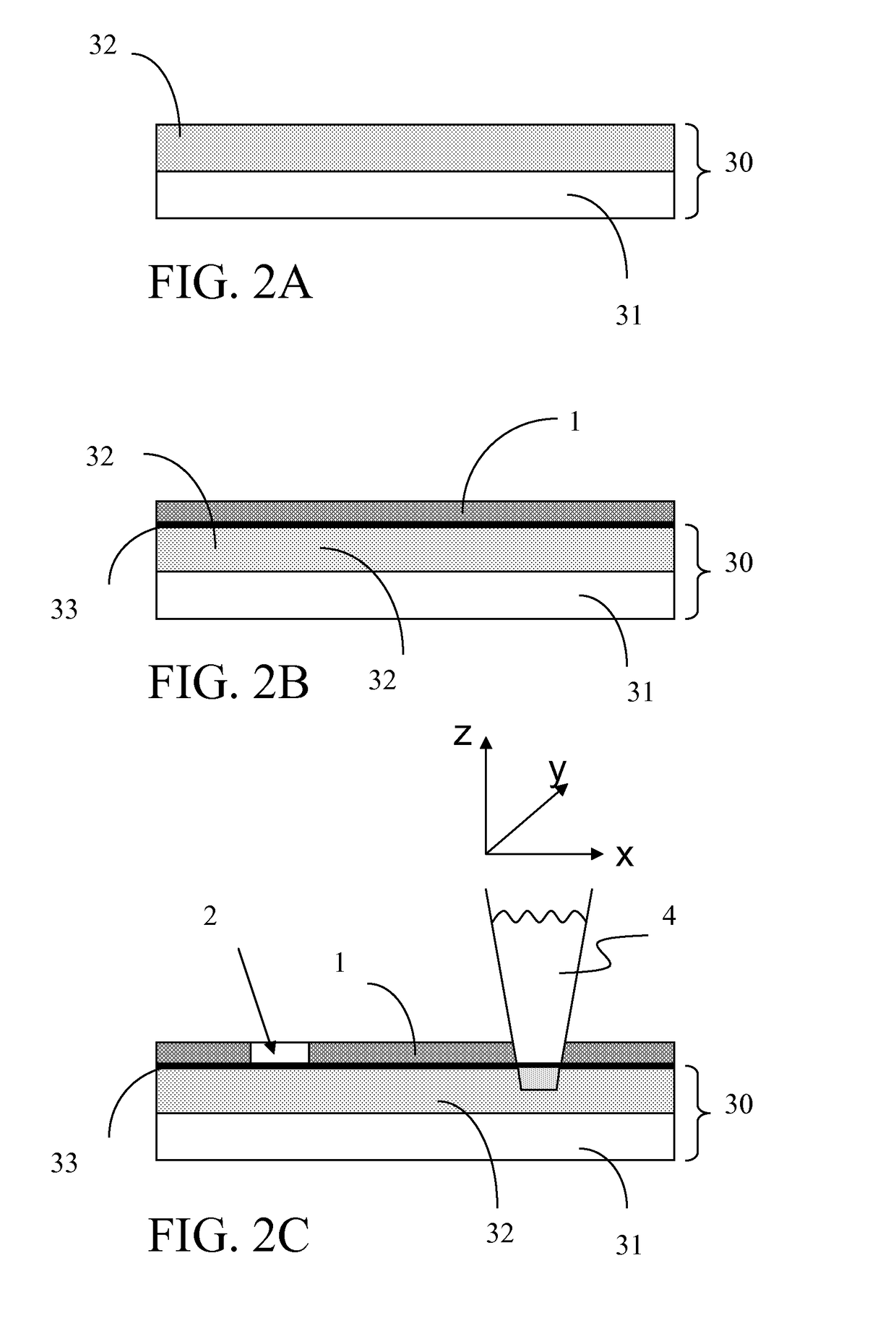Method for the electrical passivation of electrode arrays and/or conductive paths in general, and a method for producing stretchable electrode arrays and/or stretchable conductive paths in general
- Summary
- Abstract
- Description
- Claims
- Application Information
AI Technical Summary
Benefits of technology
Problems solved by technology
Method used
Image
Examples
Embodiment Construction
[0062]In FIGS. 1 to 4, the reference 10 identifies an electrode array, for instance a microelectrode array comprising at least one conductive path; in the following, for the sake of convenience and clarity, the electrode array 10 will be eventually simply referred to as a “conductive path” or “array of conductive paths”. Said conductive paths 10 may be formed according to any of the methods known in the art such as, for instance, metal deposition of a continuous metal film ad etching, metal evaporation or the like. Since the particular method used for forming the conductive path 10 does not fall within the scope of the present invention, detailed description of same is omitted for the sake of conciseness.
[0063]The thickness of the layer carrying the ‘array of conductive paths’ is determined by the application requirements with thickness limitations of known methods for depositing such layers. By way of example for silicone rubber, the thickness of the layer can vary between 1 μm to ...
PUM
| Property | Measurement | Unit |
|---|---|---|
| Length | aaaaa | aaaaa |
| Length | aaaaa | aaaaa |
| Percent by mass | aaaaa | aaaaa |
Abstract
Description
Claims
Application Information
 Login to View More
Login to View More - R&D
- Intellectual Property
- Life Sciences
- Materials
- Tech Scout
- Unparalleled Data Quality
- Higher Quality Content
- 60% Fewer Hallucinations
Browse by: Latest US Patents, China's latest patents, Technical Efficacy Thesaurus, Application Domain, Technology Topic, Popular Technical Reports.
© 2025 PatSnap. All rights reserved.Legal|Privacy policy|Modern Slavery Act Transparency Statement|Sitemap|About US| Contact US: help@patsnap.com



